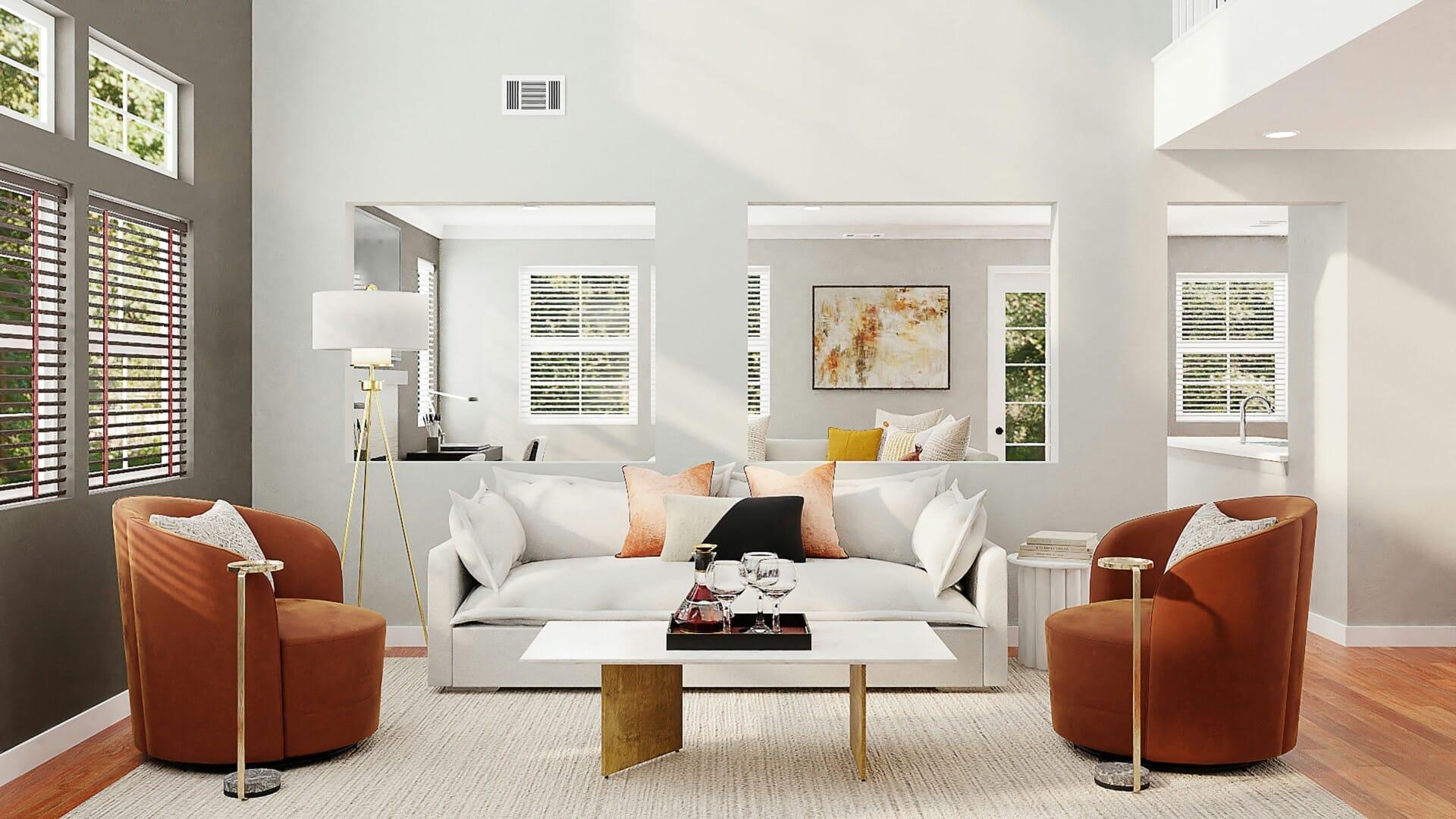Title: 5 Construction Financing Traps Malaysians Keep Falling For (and How to Avoid Them!)
Building your dream home or starting that long-awaited renovation project is an exciting journey. But hold on—before you dive headfirst into the world of construction financing, it’s essential to navigate through some tricky waters. In Malaysia’s fast-paced property market, many people find themselves ensnared in common financing traps that can lead to stress, increased costs, or even project delays. Whether you’re a first-time homeowner or a seasoned investor, understanding these pitfalls can save you time, money, and a whole lot of headaches. So, grab a cup of coffee, and let’s chat about the five construction financing traps that keep popping up in Malaysia and how you can dodge them like a pro!
Understanding the Hidden Costs of Construction Financing
When diving into construction financing, many Malaysians overlook the hidden costs that can add up significantly over time. It’s not just about the loan amount you see in the documents; hidden fees and unexpected expenses lurk in the shadows, ready to pounce on unprepared borrowers. For instance, administration fees, valuation fees, and even insurance premiums can easily slip through the cracks, inflating your overall budget and leading to financial stress.
Moreover, you might find yourself tangled in a web of interest rate adjustments. Many construction loans come with flexible rates that depend on market conditions. If you’re not well-versed in these shifts, your repayments can balloon unpredictably. It’s crucial to look out for those penalty fees too. Prepayment penalties can deter you from paying off your loan early, locking you into a longer repayment plan than you intended.
It’s smart to consider that even after your project is finished, the costs don’t end there. Ongoing expenses like maintenance, property taxes, and utility bills can create a long-term financial burden. Many overlook these aspects when budgeting, leading to a rude awakening once the dust settles. Being aware of these hidden costs from the get-go will help you be more diligent and prepared for what comes next. Here’s a quick breakdown:
| Cost Type | Potential Amount |
|---|---|
| Administration Fees | RM 1,000 - RM 3,000 |
| Valuation Fees | RM 500 - RM 2,500 |
| Insurance Premiums | RM 250 - RM 1,500 |
| Maintenance Costs | RM 200 – RM 1,000/month |

The Role of Interest Rates in Project Budgeting
When diving into construction financing, many Malaysians often overlook the impact of interest rates on their project budgets. Interest rates are essentially the cost you incur for borrowing money, and they can significantly alter the financial landscape of your construction project. For instance, even a slight increase in interest rates can lead to a dramatic rise in your monthly repayments, straining your cash flow and potentially leading to budget overruns.
To clearly understand how effectively managing interest rates can aid in budgeting, consider the following key points:
- Fixed vs. Variable Rates: Choosing a fixed interest rate can provide stability, making project budgeting more predictable, whereas variable rates can fluctuate, leading to unexpected costs.
- Market Trends: Stay informed about current trends in the financial market; if rates are low, it might be an ideal time to secure funding.
- Loan Terms: Shorter loan terms often come with higher monthly payments but lower overall interest, while longer terms may ease initial cash flow but increase total repayable amounts.
To illustrate how different interest rates can affect your overall project costs, take a look at the table below:
| Loan Amount (RM) | Interest Rate (%) | Loan Term (Years) | Total Repayment (RM) |
|---|---|---|---|
| 200,000 | 4.5 | 20 | 315,000 |
| 200,000 | 5.5 | 20 | 360,000 |
| 200,000 | 6.5 | 20 | 405,000 |
This table clearly shows how varying interest rates can lead to substantial differences in the total amount you repay. By remaining vigilant and shopping around for the best rates, you can create a more realistic and sustainable project budget that keeps your finances in check throughout the construction journey.

Spotting Red Flags in Financing Agreements
When diving into the world of construction financing, it’s crucial to keep your eyes peeled for potential pitfalls. Many financing agreements come tailored with tempting offers but might hide unwanted surprises. Always scrutinize the terms and obligations laid out in the contract. Common red flags to watch for include:
- Ambiguous Language: If you notice terms that sound vague or confusing, it’s a sign you need to dig deeper. Clarity is crucial in legal agreements!
- High Late Payment Fees: Excessive penalties for late payments can lead you into a financial spiral. Understand the repercussions and negotiate for more reasonable terms.
- Variable Interest Rates: Fixed rates offer stability; variable rates can turn unpredictable and costly. Always weigh the potential risks!
Another area that often escapes scrutiny is the withdrawal or prepayment clauses. Sometimes, lenders will impose hefty fees if you decide to pay off your loan early or withdraw funds before a specified time. This can further increase your financial burden, so ensure that these clauses are clearly defined and, if possible, minimized. A healthy financial agreement should consider your ability to manage payments without undue penalties.
Consider creating a comparison table to track different financing options. Getting a clear picture of what various lenders offer can help you avoid falling into traps. Here’s a simple example of key details to look for:
| Lender | Interest Rate | Late Payment Fee | Prepayment Penalty |
|---|---|---|---|
| Lender A | 4.5% | 5% of overdue amount | None |
| Lender B | 5.0% | 3% of overdue amount | 1% of early payoff |
| Lender C | 4.75% | 2% of overdue amount | None |

The Impact of Loan Terms on Long-Term Financial Health
When it comes to construction financing, the terms you choose can either build your financial future or bury you under a mountain of debt. Many Malaysians often overlook how a seemingly small difference in loan terms can lead to significant long-term consequences. For instance, opting for a longer repayment period might result in lower monthly payments, but it can also mean paying more in interest over time. Evaluating these terms carefully can make a world of difference in your overall financial health!
It’s also crucial to understand the impact of interest rates on your loan. A fixed interest rate provides stability, meaning your payments remain the same throughout the loan period. In contrast, a variable rate can fluctuate and may lead to unexpected increases in your payment amounts. Here are a few points to consider:
- Fixed Rates: Predictable costs, easier budgeting.
- Variable Rates: Potential savings when rates drop, but risk of higher payments.
- Interest Calculation: How interest accumulates can vary; understand your loan’s structure.
Additionally, don’t overlook the fees associated with your loan terms. Hidden costs can sneak up and bite you later, leaving you strapped for cash when you least expect it. It’s wise to request a transparent breakdown of all fees involved in the borrowing process. Here’s a simple comparison of the types of fees you might encounter:
| Type of Fee | Description |
|---|---|
| Origination Fee | A one-time charge for processing your loan. |
| Closing Costs | Expenses incurred during the finalization of your loan. |
| Prepayment Penalty | A fee for paying off your loan early. |

Exploring Government Incentives and Their Pitfalls
Diving into the realm of government incentives can feel like swimming through a sea of red tape. While these incentives are designed to help boost the construction industry and make home ownership more accessible, they often come with their own set of challenges. Many Malaysians might jump at the chance to seize these benefits only to find themselves caught in a complex web of eligibility requirements and bureaucratic delays.
When considering government incentives, it’s crucial to keep an eye on the fine print. Some common pitfalls include:
- Unclear Terms: Often, the requirements for qualifying can shift, leaving many scrambling to meet deadlines.
- Complex Application Processes: The paperwork can be overwhelming, and missing a single document can lead to disqualification.
- Limited Availability: Incentives might only be available for specific projects or locations, which can narrow your options significantly.
To avoid these traps, it’s essential to do your homework before diving in. Consider creating a simple checklist to monitor each opportunity you’re exploring. Here’s a quick guide to help you stay on track:
| Checklist Item | Status |
|---|---|
| Read all eligibility criteria | |
| Gather necessary documents | |
| Set reminders for application deadlines | |
| Check for updates on incentive programs |

The Importance of Thorough Financial Planning
In the world of construction financing, having a clear financial plan is crucial for avoiding unnecessary pitfalls. Many Malaysians underestimate the complexities involved, leading to costly mistakes that could easily be avoided with a systematic approach. By setting a comprehensive financial blueprint, prospective builders can pinpoint their budget limitations and make informed decisions regarding materials, labor, and timelines. This groundwork can prevent unpleasant surprises down the road, such as unanticipated expenses and delays.
When crafting a thorough financial strategy, consider the following key elements:
- Budget Allocation: Divide your overall budget into distinct categories such as materials, labor, permits, and unexpected costs.
- Contingency Funds: Always set aside a percentage (typically 10-20%) of your budget for unexpected expenses that may arise.
- Financing Options: Explore various financing avenues, including bank loans, government assistance programs, and private lenders.
Moreover, having a clear vision of your project timeline is equally important. Knowing when milestones are to be achieved allows you to synchronize your funding needs with actual expenditures. Here’s a simple breakdown of how a project may look over time:
| Project Phase | Estimated Duration | Budget Allocation |
|---|---|---|
| Site Preparation | 2 Weeks | 10% of Total Budget |
| Foundation Work | 3 Weeks | 20% of Total Budget |
| Framing | 4 Weeks | 25% of Total Budget |
| Finishing Touches | 3 Weeks | 30% of Total Budget |
| Contingency Fund | Ongoing | 15% of Total Budget |

Strategies for Effective Communication with Lenders
Building a positive relationship with lenders is essential for securing favorable terms in your construction financing. Start by being clear and upfront about your project’s details and financial needs. Lenders appreciate transparency and will be more inclined to support you when they fully understand your vision and requirements. Consider creating a detailed project outline that includes timelines, estimated costs, and potential challenges. This not only shows that you are well-prepared but also builds trust.
Another effective way to communicate with lenders is to proactively address concerns. Before they even ask, provide information about your credit history, income, and any past construction projects you’ve managed. This could help expedite the decision-making process. Moreover, maintain regular communication throughout the loan application process. Schedule follow-up calls or send timely emails to check in on your application’s progress or to provide any additional documents they may require. This demonstrates your commitment and keeps your application on their radar.
Lastly, remember to practice active listening during discussions with lenders. Pay attention to their feedback and concerns; this not only helps you understand their perspective but also allows you to tailor your proposal to align with their lending criteria. Additionally, if you encounter any terms or jargon that you’re unfamiliar with, don’t hesitate to ask for clarification. Building a respectful communication line can result in a more favorable lending experience and may even open doors to future financing opportunities.

Building a Support Network to Navigate Financing Challenges
When diving into the complex world of construction financing, having a solid support network can be a game-changer. Surrounding yourself with the right people not only provides emotional backing but also opens doors to invaluable knowledge and resources. Think about connecting with professionals in the field, such as financial advisors, construction managers, and even fellow builders who have navigated these waters before. They can share their insights and experiences, helping you avoid common pitfalls.
Another essential component of your support network is tapping into local community groups and online forums. Engaging with others who are also seeking financing can lead to fruitful discussions and the exchange of helpful tips. You might even discover potential partnerships or collaborative ventures that can enhance your project’s viability. Plus, sharing your challenges can lighten the load and provide fresh perspectives.
It’s also wise to develop relationships with financial institutions and lenders who specialize in construction projects. By building rapport, you position yourself as a preferred client, potentially unlocking better loan terms and faster processing times. Sharing your plans and goals with these professionals not only keeps you in their radar but also paves the way for financial assistance tailored to your specific needs.
The Way Forward
As we wrap things up, it’s clear that navigating the world of construction financing can feel a bit like walking through a minefield—especially for us Malaysians! The traps we’ve highlighted might seem tempting or even unavoidable, but with a little know-how and foresight, you can sidestep these pitfalls and keep your project on track.
Remember, the key is to stay informed and ask the right questions. Don’t just take things at face value—dig a little deeper! Whether it’s doing your homework on lenders or understanding the fine print of your contracts, being proactive can save you a heap of money and stress.
So, before you dive into your next construction project, take a moment to review these traps and the tips we’ve shared to avoid them. With the right approach, you can turn your dream home or building project into a reality without falling into those pesky financing traps. Happy building!







